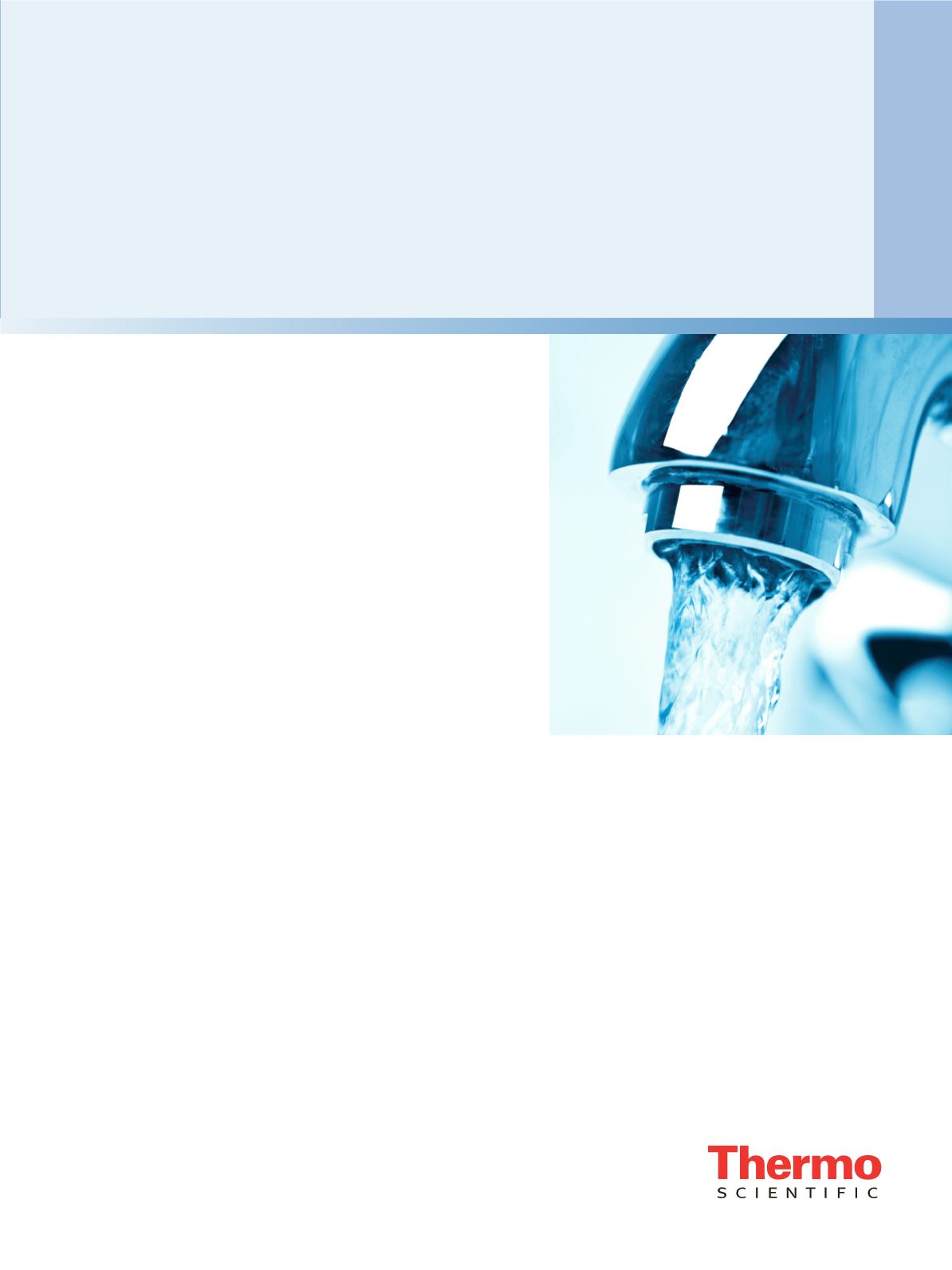

Quantification of Haloacetic Acids in Tap
Water Using a Dedicated HAA LC Column
with LC-MS/MS Detection
Thermo Fisher Scientific, San Jose, CA
Application Note 590
Key Words
Haloacetic acid, Water Supply Act, LC-MS/MS, TSQ Quantum Ultra,
Acclaim HAA HPLC column
Goal
To develop an LC-MS/MS method for measuring haloacetic acids in tap
water using a dedicated HPLC column.
Introduction
In April 2012, methods provided by the Japanese Ministry
of Health, Welfare and Labour based on provisions in the
Water Quality Standards Ordinance (Ministry of Health,
Welfare and Labour, Notification 261, July 2003) were
revised, and the inspection method for haloacetic acids
(HAAs) was expanded to include an analysis method
using liquid chromatography paired with mass
spectrometry (LC/MS or LC-MS/MS) as an alternative to
gas chromatography with mass spectrometry (GC/MS).
The LC-MS(/MS) method does not require derivatization
of samples and is therefore a simple measurement method.
However, tap water typically contains on the order of
several to several dozen mg/L of chloride, sulfate,
carbonate, and nitrate anions. When performing LC-MS
analysis, these anions inhibit the ionization of haloacetic
acids and cause signal suppression in the MS detector. In
addition, when using a standard reversed-phase column,
the retention varies depending on matrix differences, the
infusion amount, and the column lot, resulting in poor
recoveries, robustness, and detection limits.
A number of LC-MS/MS methods for haloacetic acids
using C18 (ODS) columns have already been developed.
However, separation from the many ionic matrix
components contained in tap water has been insufficient
in these methods. Retention times varied widely between
neat standards and real samples, making it difficult to
obtain reproducible results.
The Thermo Scientific
™
Acclaim
™
HAA column is
designed for analyzing haloacetic acids in drinking water
by LC/MS. It is based on mixed-mode column technology
and offers reversed-phase and anion-exchange retention
mechanisms that enable separation of haloacetic acids in
high ion matrices. This results in robust performance in
real drinking water samples that contain matrix ions. In
addition, sample preparation costs are reduced because
analysis is possible without sample preparation or
concentration.
This application note describes the LC-MS(/MS)
separation using the Acclaim HAA column for haloacetic
acid analysis in drinking water.



















